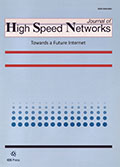Authors: Su, Yunxuan | Wang, Xu An | Du, Weidong | Ge, Yu | Zhao, Kaiyang | Lv, Ming
Article Type:
Research Article
Abstract:
With the development of big data technology, medical data has become increasingly important. It not only contains personal privacy information, but also involves medical security issues. This paper proposes a secure data fitting scheme based on CKKS (Cheon-Kim-Kim-Song) homomorphic encryption algorithm for medical IoT. The scheme encrypts the KGGLE-HDP (Heart Disease Prediction) dataset through CKKS homomorphic encryption, calculates the data’s weight and deviation. By using the gradient descent method, it calculates the weight and bias of the data. The experimental results show that under the KAGGLE-HDP dataset,we select the threshold value is 0.7 and the parameter setting is (Poly_modulus_degree, Coeff_mod_bit_sizes,
…Scale) = (16384; 43, 23, 23, 23, 23, 23, 23, 23, 23, 23, 23, 23, 43; 23), the number of iteration is 3 and the recognition accuracy of this scheme can achieve 96.7%. The scheme shows that it has a high recognition accuracy and better privacy protection than other data fitting schemes.
Show more
Keywords: Cloud computing, data fitting, homomorphic encryption, gradient descent method
DOI: 10.3233/JHS-222016
Citation: Journal of High Speed Networks,
vol. 29, no. 1, pp. 41-56, 2023
Price: EUR 27.50





